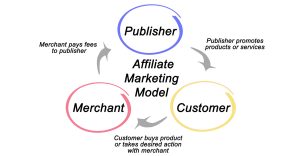
Share
TikTok is where cool kids go to dance and Facebook is where your parents go to argue about politics, but whether you’re into video games, fashion or knitting, YouTube has always been for everyone.
Not only is it the second most visited website in the world, with over two billion monthly logged-in users, but it’s also one of the most trusted sources for consumers to learn about the products they’re interested in buying.
According to one study, 89% of shoppers agreed with the statement that they can trust recommendations that come from YouTube creators. That’s why, for years, shoppers would visit YouTube for product reviews and demonstrations and then navigate away to a new page to complete their purchase.
Now, however, YouTube is hoping to combine the discovery and purchase parts of the consumer journey into a single step by rolling out a new suite of tools and features designed to make it easier for creators to sell products directly from their own channels.
The new tools will be deployed within YouTube Studio’s shopping tab and will make it easier for creators and brands to manage and tag the products they offer across all of their videos.
Additionally, all eligible creators will be given added functionality on YouTube’s live stream shopping feature (we told you this was coming!), including the ability to tag products in a live stream directly from the Live Control Room.
In a blog post announcing the new tools, David Katz, YouTube’s Vice President of Shopping Product, said that they plan on continuing to roll out new interfaces and features that will grow the website as a commerce platform and increase shopping functionality for both creators and buyers.
Every D2C brand understands that they have to create compelling content in order to connect with their audiences. But what we’re increasingly seeing is how technology is allowing that content to be leveraged not just for brand awareness but as a means to sell directly to your consumer as well.
On top of all of these new tools, YouTube also announced a new partnership with Shopify that will allow Shopify merchants to integrate their merchant page with their YouTube channels and automate previously labor-intensive tasks such as inventory management and product promotion.
Creators are already taking advantage of the deal and CEO of Dominique Cosmetics, Christen Dominique says that “Bringing my commerce platform and my most popular viewer engagement platform together will be a game changer for me…it’s so important that I show up where my customers are shopping, and more and more that’s on YouTube. With the Shopify and YouTube integration, I can share new products from Dominique Cosmetics directly on my videos and lives, and make it easy for viewers to purchase as they watch.”
In a press release, VP of Product at Shopify Kaz Nejatian stated that “Shopify is the commerce infrastructure of the internet, powering millions of independent businesses all over the world. We believe creators are the next generation of merchants, and YouTube has been a long-time leader in powering this new cohort of entrepreneurs. We’re excited to partner with YouTube, and help scale the creator economy into its next phase of growth.”
If all of that sounds familiar, it’s because that’s pretty much the same deal that Shopify recently announced with Twitter as well, and they’re clearly trying to position themselves as the go-to e-commerce management platform for brands that want to take advantage of social commerce.
Social selling has become one of the fastest growing new channels for e-commerce retail, with sales projected to reach $80 billion by 2025, which is twice what they were in 2021. And while the United States is one of the world’s leaders in social commerce sales, China actually spends the most money through this channel, with retail social commerce sales making up 13% of their e-commerce market.
As publishers look to diversify their revenue streams beyond advertising, it’s clear that they’ve recognized social commerce as a major area for growth. In the last year alone, we’ve seen the expansion of e-commerce tools and features across every social network.
Any brand that wants to boost their sales needs to have a strategy for how they’ll be able to sell directly through their own social media channels as well as their influencer affiliates.





